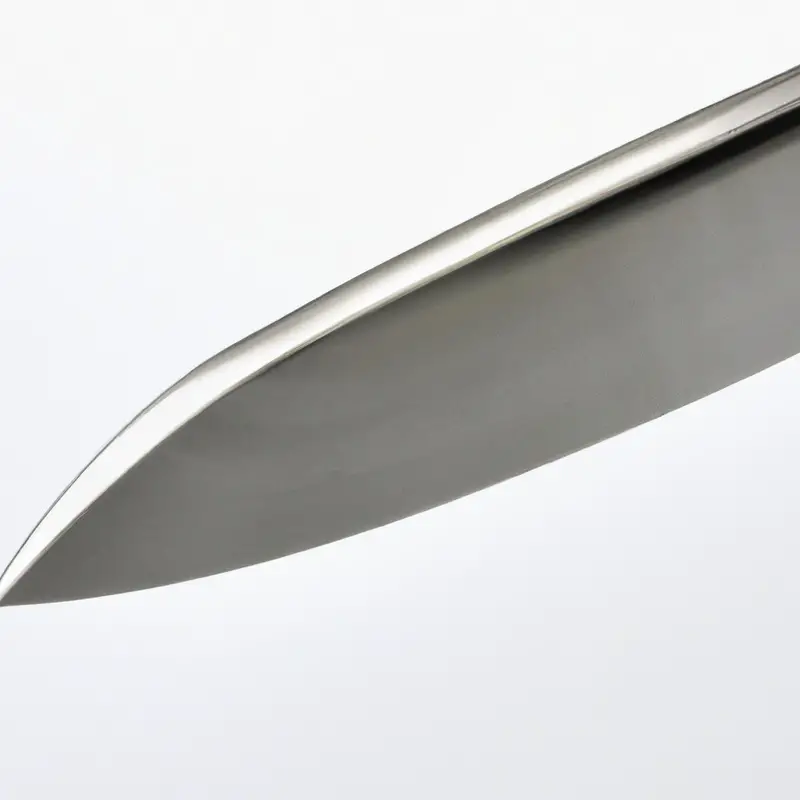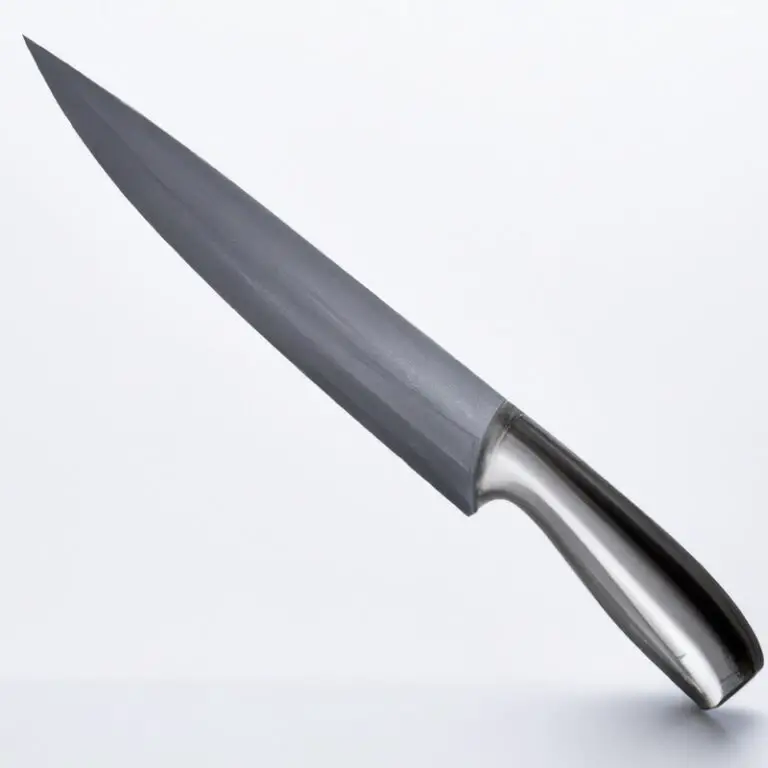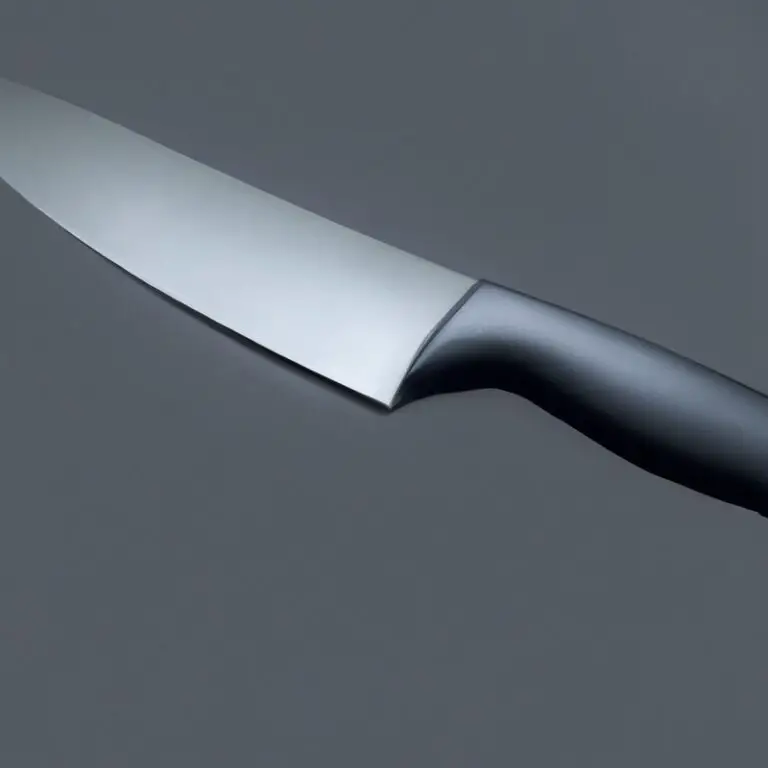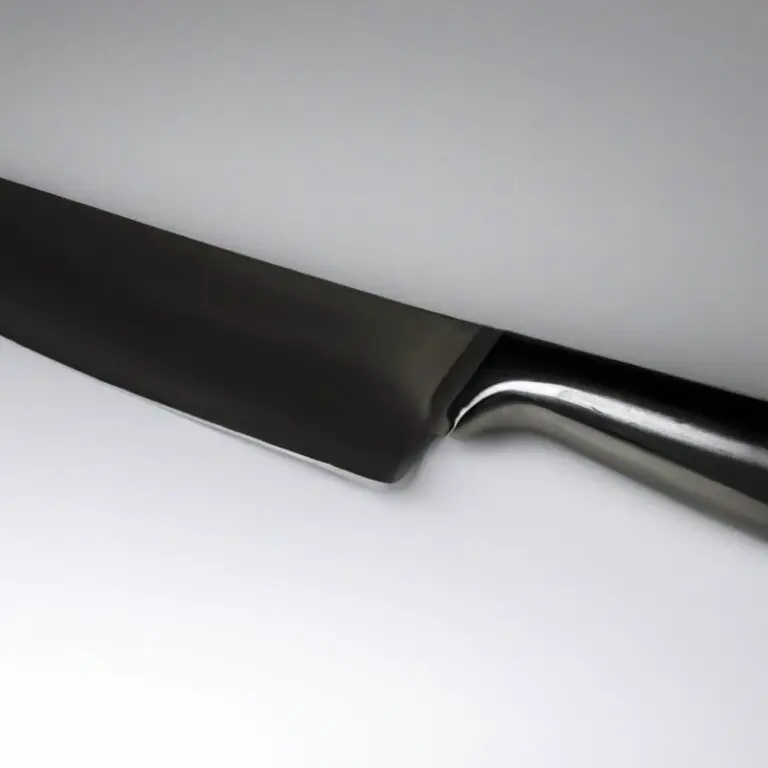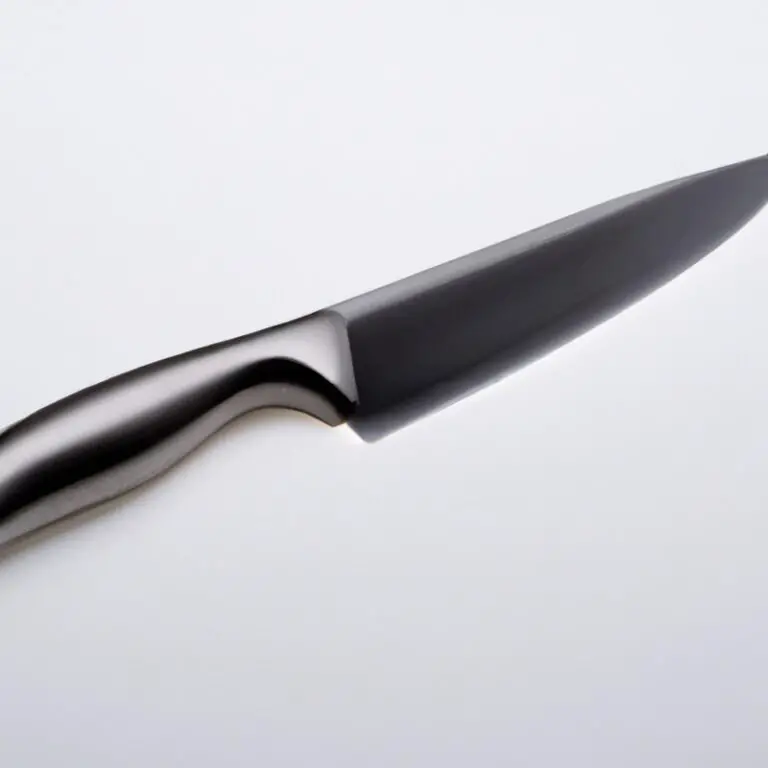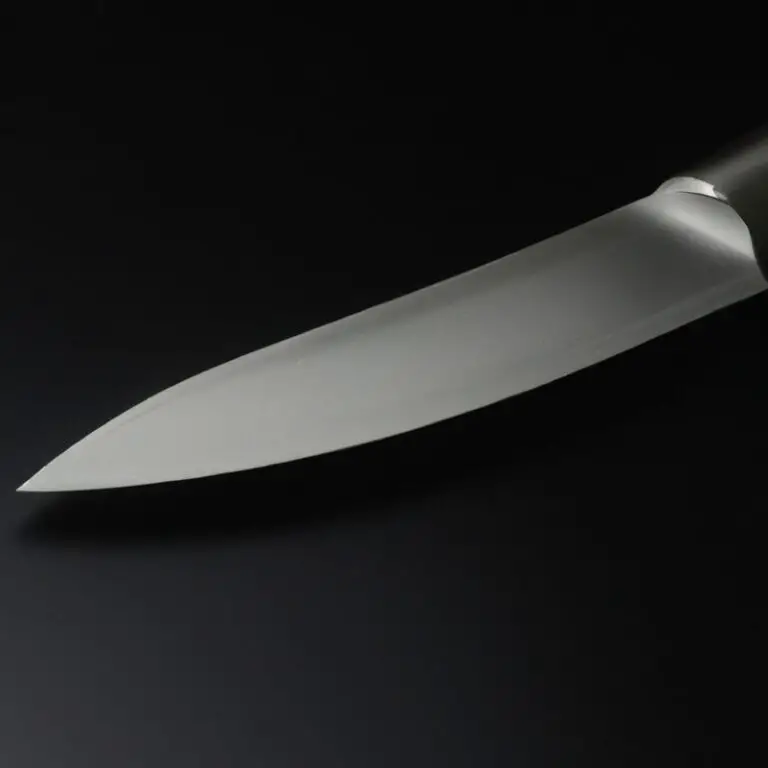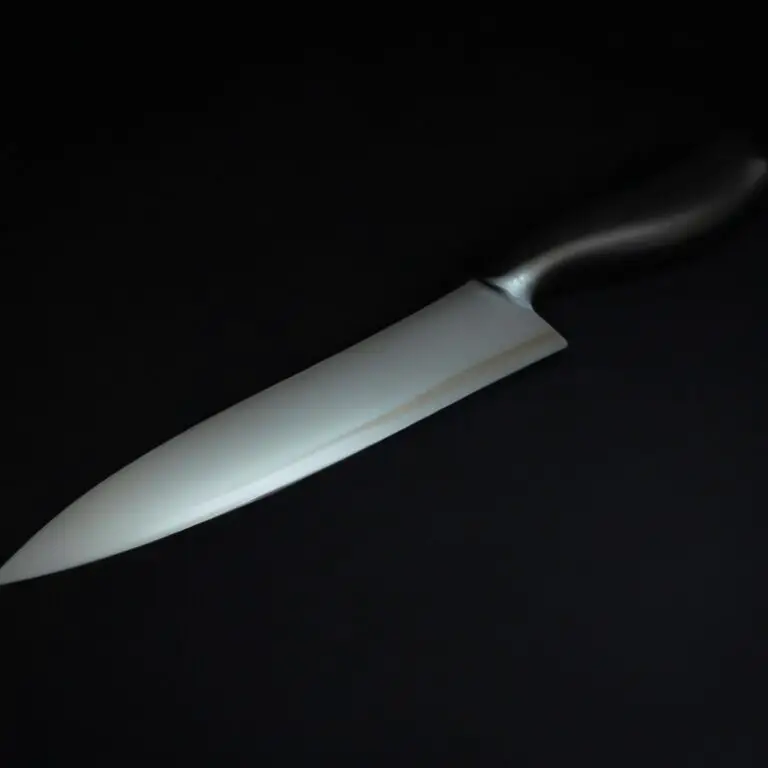Storing a Santoku Knife In a Sheath For Convenience – Hassle-Free!
Key Takeaways:
- Storing your Santoku knife in a sheath can help keep the blade sharp and prevent damage during transport.
- A sheath can also make it easier to safely handle and store your knife in tight spaces, such as small kitchens or drawers.
- When selecting a sheath, it’s important to choose one that fits your Santoku knife snugly and provides adequate protection.
- Regular cleaning and maintenance of both your Santoku knife and its sheath will help ensure optimal performance and longevity.
Have you ever struggled with finding a safe and convenient place to store your Santoku knife? It’s a common problem for many home chefs.
That’s why I wanted to share some valuable insights into the benefits of using a sheath to store your beloved Santoku knife.
As a seasoned chef, I understand the importance of proper knife storage and maintenance. Whether you’re a professional chef or a home cook, this article will provide essential information about selecting the right sheath, cleaning and maintaining it, and avoiding common mistakes.
Discover the convenience of storing your Santoku knife in a sheath, and take your kitchen game to the next level.
| Method | Pros | Cons |
|---|---|---|
| Storing the knife in a sheath | Convenient and easy to access Protects the blade and your fingers from accidental cuts Great for on-the-go chefs | May dull the blade over time Can be difficult to clean and dry thoroughly May lead to rust or corrosion if not cleaned and dried properly |
| Storing the knife in a block or on a magnetic strip | Keeps the blade sharp Easy to clean and dry | Not as convenient to access May expose the blade to damage or nicks from other knives |
| Storing the knife loose in a drawer | Takes up little space | Dangerous and poses a risk of accidental cuts Can damage the blade or cause nicks May dull the knife quickly |
Understanding Santoku knives and their unique design
Santoku knives are a Japanese-style kitchen knife that translates to “three virtues.” These virtues refer to their ability to chop, slice, and dice a variety of ingredients with ease and precision. Santoku knives have a shorter and wider blade than a traditional chef’s knife, which makes them more versatile for smaller tasks.
The unique design of Santoku knives also includes a flat edge and a Granton edge, also known as a scalloped edge.
The flat edge is perfect for cutting through hard vegetables and fruits, while the Granton edge prevents ingredients from sticking to the blade by creating air pockets. Additionally, Santoku knives have a thinner blade than a traditional chef’s knife, which allows for more precise and delicate cuts.
The blade also has a straighter edge than a curved chef’s knife, which makes it easier to maintain a consistent angle while cutting.
Overall, the design of a Santoku knife offers a perfect balance of functionality, precision, and versatility. With proper handling and maintenance, a Santoku knife can become an essential tool in any kitchen.
The importance of properly storing your Santoku knife
Properly storing your Santoku knife is essential to maintain its sharpness and prolong its life. Leaving the knife exposed can lead to dullness and damage to the blade.
The blade can also be a safety hazard if not stored properly.
It is important to keep the blade covered and protected when not in use to prevent accidental injuries. A sheath is an effective and convenient way to store your Santoku knife.
A properly fitted sheath will protect the blade from damage and keep it sharp for longer.
Additionally, it will also prevent the knife from coming into contact with other utensils, preventing scratches or other damages. Always make sure that the blade is clean and completely dry before storing it in a sheath to prevent any rust or moisture buildup.
Proper storage can help prolong your Santoku knife’s life and maintain its performance.
Choosing the right sheath for your Santoku knife
Choosing the right sheath for your Santoku knife is crucial in ensuring its safety and longevity. There are two primary types of sheaths to consider: leather and plastic.
Leather sheaths are durable, sturdy, and offer a classic aesthetic appeal that some users prefer.
They provide good protection against scratches and other potential damages that may occur during storage or transport. However, leather tends to absorb moisture, which can cause rust or corrosion on the blade if the knife is not dried properly.
Plastic sheaths, on the other hand, are generally more lightweight and easier to clean, making them a popular choice among users who prioritize convenience and low maintenance requirements.
They also tend to be more affordable than leather sheaths but do not provide the same aesthetic appeal or protection against sharp objects that may puncture or tear the material. When choosing a sheath for your Santoku knife, consider factors such as your personal preferences, the level of protection you need, and the type of storage or transportation you will be using.
For example, if you frequently carry your Santoku knife around in a bag or backpack, a plastic sheath may be more suitable due to its lightweight and easy-to-clean qualities.
Ultimately, the choice between leather and plastic sheaths comes down to personal preferences and needs. Whichever option you choose, make sure to properly clean and maintain the sheath regularly to prevent any damage or wear and tear, which can affect the quality and lifespan of your Santoku knife.
Leather vs plastic sheaths: Pros and cons
When choosing a sheath for your Santoku knife, two common options are leather and plastic. Here are some pros and cons to consider: Leather Sheaths: Pros:
- Durable and long-lasting
- Attractive and stylish
- Can mold to the shape of the knife over time
Cons:
- Can be expensive
- Requires regular maintenance and conditioning to prevent drying out and cracking
- Can absorb moisture and stain or damage the blade if not properly dried before storage
Plastic Sheaths: Pros:
- Less expensive than leather
- Easy to clean and maintain
- Lightweight and portable
Cons:
- Not as aesthetically pleasing as leather
- May scratch the blade over time if not properly maintained
- May crack or break with heavy use or exposure to extreme temperatures
Ultimately, the choice between a leather or plastic sheath will depend on your personal preference and the specific needs of your Santoku knife. Consider factors such as durability, aesthetics, and ease of maintenance before making your decision.
Cleaning and maintaining your Santoku knife sheath
To keep your Santoku knife sheath in good condition, it is important to clean and maintain it regularly. Here are some tips to help you keep it in top shape:
- Use a damp cloth to wipe down the inside and outside of the sheath.
- Avoid using bleach or other harsh chemicals that can damage the sheath.
- Store the sheath in a cool, dry place to prevent mold and mildew growth.
- If the sheath gets wet, dry it thoroughly with a clean cloth before storing.
- Check the sheath regularly for any cuts or damage that may weaken its protective properties.
By following these simple steps, you can ensure that your Santoku knife sheath stays in excellent condition and continues to protect your blade for years to come.
Tips for safely inserting and removing your Santoku knife from the sheath
To safely insert and remove your Santoku knife from the sheath, follow these tips:
- Hold the sheath firmly and place the knife blade inside the sheath, aligned with the opening. Push the blade gently until it reaches the bottom of the sheath.
- When removing the knife, place your fingers on the sheath and grip the handle of the knife. Pull the knife out, guiding it away from your body and keeping your fingers away from the blade.
- Never force the knife into or out of the sheath. If it feels difficult to insert or remove the knife, double-check the alignment and adjust it accordingly.
- Always store the knife in the sheath when not in use to protect the blade and ensure safe handling.
By following these tips, you can safely and efficiently insert and remove your Santoku knife from the sheath, reducing the risk of accidents or damage to the blade.
The benefits of using a sheath for storing your Santoku knife
Using a sheath to store your Santoku knife comes with several benefits.
- Protection: The sheath offers protection to your knife, preventing it from dulling or getting damaged. This is especially essential when storing the knife alongside other utensils in a drawer or when transporting it.
- Convenience: A sheath makes it easier to transport and store your Santoku knife, whether in a kitchen drawer or when on the go.
- Safety: A sheath also helps minimize the risk of accidents that may occur when reaching for the knife without looking or when handling it carelessly.
- Durability: A good-quality sheath made of leather or plastic can last a long time. This helps prolong the life of your knife, thereby saving you money in the long run.
Investing in a good-quality sheath is essential in ensuring that your Santoku knife stays sharp and lasts long.
Common mistakes to avoid when using a Santoku knife sheath
Common mistakes to avoid when using a Santoku knife sheath include:
- Placing the knife in the sheath while it is still wet or damp. This can cause rust or corrosion to form on the blade.
- Forcing the knife into the sheath. Santoku knives have a thinner edge than other knives, and they require a gentle touch when inserting them into the sheath. Forcing the knife can damage the blade or the sheath.
- Storing the knife in the sheath for extended periods without checking it. Over time, the sheath can become dirty or damaged, which can lead to rust or corrosion on the blade.
- Using a sheath that is not designed for your specific Santoku knife. This can cause the knife to fit incorrectly in the sheath, which can damage both the blade and the sheath.
By avoiding these common mistakes, you can help ensure that your Santoku knife stays in top working condition for years to come. Remember to always handle your knife with care and to clean and maintain both the blade and the sheath regularly.
Adding a sheath to your Santoku knife set: Factors to consider
When considering adding a sheath to your Santoku knife set, there are a few factors to keep in mind. Firstly, ensure that the sheath is compatible with your knife’s size and shape.
A poorly fitting sheath can damage the blade or compromise your safety by allowing the knife to slip out.
Secondly, consider the material of the sheath. Leather sheaths are classic and stylish, but they require more maintenance and can absorb moisture, which can affect the blade.
Plastic sheaths, on the other hand, are durable and easy to clean but may not be as aesthetically pleasing.
Lastly, think about the intended use and storage of the knife. If you plan on using and carrying your Santoku knife frequently, a sheath with a belt loop or clip is a convenient option.
If you plan on storing your knife for long periods, a sheath with a moisture-absorbing insert can help prevent rust and corrosion.
By considering these factors, you can choose the right sheath to protect and store your Santoku knife for convenience and longevity.
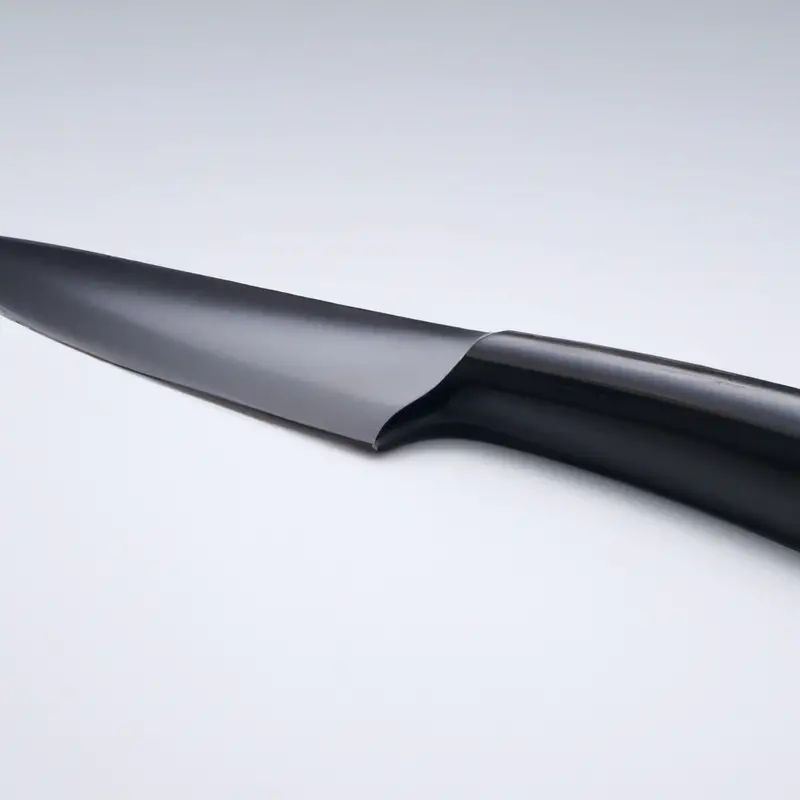
Innovative Santoku knife sheath designs for added convenience
Innovative Santoku knife sheath designs have numerous benefits, including adding to the convenience of storing and carrying your knife. Some designs come with additional compartments that can hold smaller knives, honing rods, or other accessories.
Magnetic sheaths can hold the knife securely in place without the need for straps or buttons.
Some innovative Santoku knife sheath designs also come with features such as drainage holes to allow for water to escape, reducing moisture build-up and potential rust. Additionally, some sheaths have a vent system that allows air to circulate, promoting drying and preventing odor buildup.
Ultimately, choosing a Santoku knife sheath that meets your specific needs and preferences is important for protecting and prolonging the life of your knife.
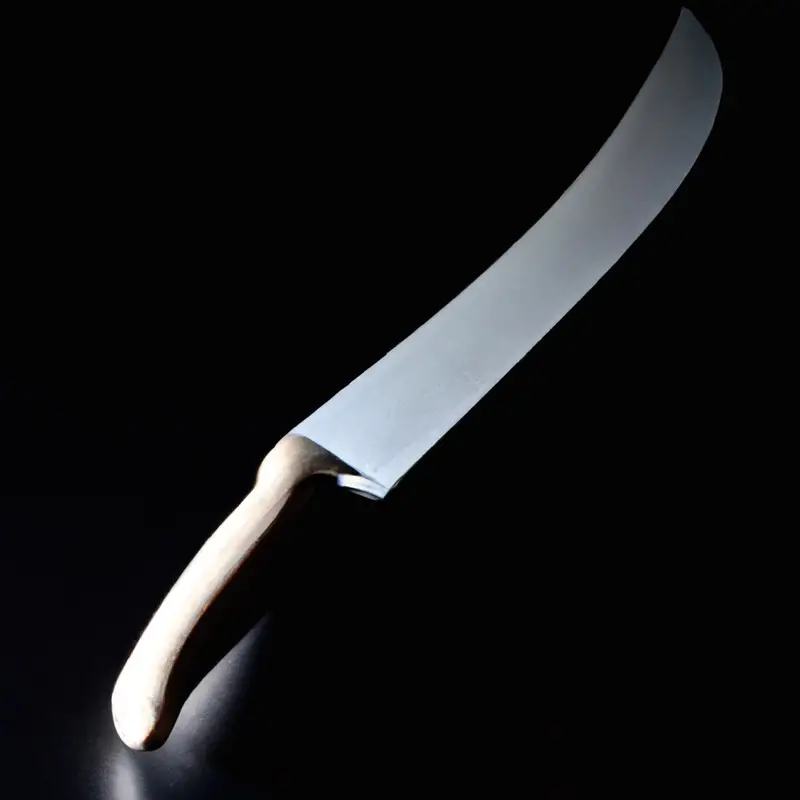
Final Verdict
Using a sheath to store your Santoku knife is crucial for its safety and convenience but it is equally important to choose the right sheath and maintain it properly. Whether it’s leather or plastic, the sheath should fit snugly, protect the blade and be easy to clean.
Furthermore, always ensure to insert and remove the knife from the sheath safely and avoid making common mistakes.
By following these tips and considering innovative designs, you can make your Santoku knife experience hassle-free. Remember, proper storage is an essential part of knife care and can extend your knife’s lifespan.
Incorporating a sheath to your Santoku knife set can make a big difference in your kitchen and inspire confidence in your cooking.

